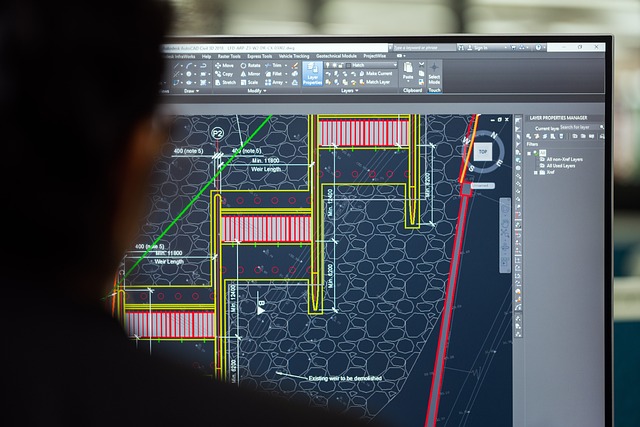CNC cutting has significantly transformed how we approach various woodworking projects, particularly with materials like Medium Density Fiberboard (MDF). MDF CNC cutting is a process that combines precision with speed, offering an excellent solution for various applications. Whether for custom furniture, architectural elements, or signage, MDF CNC cutting ensures an efficient and highly accurate outcome.
In this post, we will explore the unique advantages of CNC cutting MDF, its popular applications, and what sets this method apart from traditional wood-cutting techniques.
What is MDF CNC Cutting?
Medium Density Fiberboard is a highly versatile material made from wood fibers bonded together with resin under high pressure. Its smooth surface, uniform density, and lack of grain make it an ideal candidate for CNC cutting. CNC, or Computer Numerical Control, is a technology where computers control the movement of cutting tools, enabling precision work with minimal human intervention.
MDF CNC cutting involves using this automated technology to carve, drill, and shape MDF sheets into complex designs and patterns. This level of precision allows designers and fabricators to create intricate components that would be challenging or time-consuming using manual cutting methods.
Why Choose MDF CNC Cutting?
MDF is often chosen for CNC cutting because of its structural properties. However, the cutting process itself holds several advantages over traditional methods:
1. Accuracy and Precision
The primary benefit of MDF CNC cutting lies in its ability to produce highly precise cuts. Since the cutting path is controlled by a computer program, there is little room for error. This is especially crucial when working with complex shapes and patterns that require exact measurements.
Unlike hand-cutting, where even the most skilled workers can make mistakes, CNC ensures that every cut matches the design specifications perfectly. This is critical for industries such as custom furniture manufacturing or cabinetry, where minor discrepancies can lead to poor-fitting components.
2. Speed and Efficiency
Once the CNC machine is set up and the design is programmed, the cutting process is incredibly fast. Large sheets of MDF can be cut and shaped within minutes. This speed is not only beneficial for mass production but also for one-off projects where time is a limiting factor.
Additionally, CNC cutting can operate continuously, enabling businesses to meet tight deadlines without compromising on quality. The high-efficiency factor also makes it possible to cut down on waste, as the machine only cuts what is necessary according to the design file.
3. Versatility in Design
One of the most exciting aspects of CNC cutting is the freedom it offers in terms of design. Whether you need intricate decorative panels or simple functional components, CNC machines can handle it all. The versatility comes from the fact that the machine can be programmed to cut virtually any shape, no matter how complex.
For MDF, which is a smooth and even material, CNC cutting allows for crisp, clean edges that would be difficult to achieve by hand or with conventional cutting tools.
4. Repeatability
Another major advantage is repeatability. Once a design is programmed, the CNC machine can reproduce the exact same cut countless times without any variation. This makes MDF CNC cutting ideal for large-scale production, where uniformity across all pieces is essential.
For example, if you are producing a series of cabinets, doors, or signs, the consistency achieved with CNC cutting ensures that every piece will fit perfectly with the others, reducing assembly time and minimizing the need for corrections.
5. Cost-Effectiveness
While the initial setup cost for CNC cutting can be high, the process is ultimately more cost-effective than traditional cutting methods. The speed and accuracy of the machines reduce labor costs, while the reduction in material waste lowers production costs. For businesses, this means a faster return on investment and more competitive pricing for clients.
Common Applications of MDF CNC Cutting
MDF CNC cutting is widely used across different industries, thanks to its versatility and cost-effectiveness. Here are some of the most popular applications:
1. Furniture Design and Manufacturing
MDF is frequently used in furniture production because it is sturdy, affordable, and easy to work with. CNC cutting makes it possible to create complex and customized furniture pieces, from intricate chair backs to cabinet doors with decorative details.
2. Interior Design Elements
Architectural panels, ceiling tiles, and wall accents made from MDF can be CNC cut to suit any design scheme. These elements can be tailored to meet specific aesthetic requirements, whether you’re aiming for a modern, minimalist look or something more elaborate.
3. Signage
CNC cutting is also popular for creating signage. MDF can be cut into letters, logos, and other shapes that can be used for both indoor and outdoor signage. The smooth surface of MDF provides an excellent base for painting or laminating, allowing for high-quality finishes.
4. Prototyping
Because CNC cutting is so precise and repeatable, it is often used for prototyping new designs. Whether in the automotive industry, product development, or other fields, MDF CNC cutting enables quick and affordable production of test models and prototypes.
Key Considerations for MDF CNC Cutting
While MDF CNC cutting offers numerous benefits, there are some factors to keep in mind to ensure the best results:
1. Tool Selection
The type of cutting tool used will impact the quality of the cut. Since MDF is dense, it can wear down cutting tools faster than softer materials. Selecting high-quality, sharp tools specifically designed for MDF will extend their life and provide cleaner cuts.
2. Dust Management
MDF generates a lot of fine dust when cut. Proper dust extraction and filtration systems should be in place to protect workers’ health and ensure a clean working environment. This dust can also clog the cutting tools, reducing their efficiency, so regular maintenance is important.
3. Material Thickness
The thickness of the MDF sheet can affect the cutting process. Thicker sheets may require multiple passes or the use of specialized cutting tools to ensure that the cut is clean and precise.
Conclusion
MDF CNC cutting is a powerful method for producing detailed and accurate cuts in MDF, making it an essential tool for industries that require precision, efficiency, and versatility. Whether you’re in the furniture business, working in interior design, or crafting signage, CNC cutting enables you to meet complex design demands with ease. The technology continues to evolve, offering even more possibilities for customization and production.



